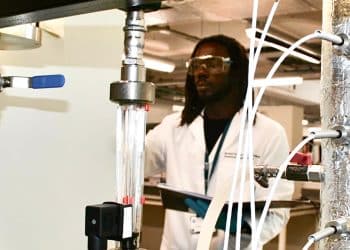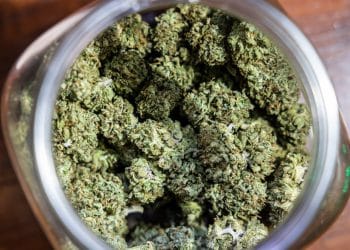Here you can find a selection of cannabis scientific studies published in the latest month. Each article is correlated with a short abstract describing the purpose of the study and the main research findings.
A great cannabis culture comes from great and peer reviewed sources! For this reason we believe in the importance of consulting reliable sources. Whether you are interested in a particular article don’t hesitate to read the full piece for more information.
Cannabis and Health ⎯ Best new findings
Cannabinoids for symptom management in children with cancer: A systematic review and meta‐analysis
In this systematic review are collected all the info related to the use of cannabis products in clinical applications for children with cancer. The aim of this research was collecting data about the types of cannabis used, doses, formulations, frequencies, clinical indications, routes of administration as well as the cannabinoid-linked adverse effects. From the research emerges that cannabinoids have been used mainly to face chemotherapy-induced nausea and vomiting.
Among the adverse effects of cannabis use in this context there are dry mouth, dizziness and somnolence. However no serious cannabis-related adverse events were reported. Even if there is evidence of cannabis support in managing chemotherapy-related symptoms there is still a lack of a rigorous range of dosing, safety profiles and proven cannabis efficacy. More study should be done in order to fully understand the potential of this plant in treating children with cancer.
Source: https://doi.org/10.1002/cncr.34920
Phytocannabinoids: Pharmacological effects, biomedical applications, and worldwide prospection
Among possible palliative medications to treat symptoms associated with neurological diseases, Cannabis sativa L. has a promising future. There is still lack of evidence about cannabis effectiveness to treat symptoms such as pain and nausea linked to Parkinson’s disease, Alzheimer’s disease, amyotrophic lateral sclerosis (ALS), multiple sclerosis, depression, etc.
Nevertheless new technologies are arousing, boosting the global market of cannabis because tetrahydrocannabinol (THC) and cannabidiol (CBD) benefits have been proven in several studies. This is important research because many countries are hostile to cannabis regulation changes due to concerns regarding the possible addiction or other adverse events, and poor or uncertain effectiveness evidence.
Source: https://doi.org/10.1016/j.jtcme.2023.08.006
An overview on synthetic and biological activities of cannabidiol (CBD) and its derivatives
Epidiolex (Cannabidiol) has been approved by the FDA for the treatment of two rare and severe forms of epilepsy related diseases, namely Lennox-Gastaut syndrome (LGS) and Dravet (DS). IN addition to that cannabidiol have gained attention in terms of possible neuroprotection, anti-epilepsy, anti-inflammation, anti-anxiety, and anti-cancer agent. This article covers the synthesis of cannabidiol and its analogues as well as the promising significant activities of these molecules.
Source: https://doi.org/10.1016/j.bioorg.2023.106810
High levels of pesticides found in illicit cannabis inflorescence compared to licensed samples in Canadian study using expanded 327 pesticides multiresidue method
The implementation of the Cannabis Act in 2018 stated that growers have to proof that their crops are cultivated without the use of unauthorized pesticides and that there are not harmful chemicals in their final products. This study shows how the Cannabis act is providing a safer cannabis production in Canada compared to the inflorescences coming from the illegal market.
The analyses are performed using an extensive multi-residue method in a combination of gas chromatography, triple quadrupole mass spectrometry for the quantification of 327 pesticides at the same time. Chlorpyrifos, imidacloprid, and myclobutanil substances were measured in illicit samples in relevant concentrations.
Source: https://doi.org/10.1186/s42238-023-00200-0
Cannabis and biological effects ⎯ Best new findings
The cannabis terpene bisabolol increased locomotion but had no effect on anxiety-like behavior in zebrafish
Bisabolol is one terpene commonly found in certain strains of cannabis, sage, and chamomile that has been shown to have potential anxiolytic effects. This study shows that bisabolol increases locomotion at the highest concentration used here (0.002%) but does not affect anxiety-like behavior in zebrafish.
Source: https://journals.macewan.ca/studentresearch/article/view/2671
Cannabinoids and standardized cannabis extracts inhibit migration, invasion, and induce apoptosis in MCF-7 cells through FAK/MAPK/Akt/NF-κB signaling
This study aimed to investigate the effects of tetrahydrocannabinol (THC) and cannabidiol (CBD) and some standardized cannabis extracts (F1, F2, F3) on migration, invasion, and apoptosis of human breast cancer (MCF-7) cells. Using the colorimetric assay MTT it was evaluated the cell metabolic activity after treatment with cannabis extracts or concentrates. Other used techniques were clonogenic, and nuclear staining assays.
To find out the mechanism of cannabinoids against MCF-7 cells, Western blot analysis was used. In addition to that the cell migration and invasion were evaluated using the wound healing, trans-well, and filopodia assays. The results of this study show that THC, CBD and the standardized extract F1 have great abilities for preventing cell metastasis in breast cancer in vitro experiments.
Source: https://doi.org/10.1016/j.tiv.2023.105667
A type II cannabis extract and a 1:1 blend of Δ(9)-tetrahydrocannabinol and cannabidiol display distinct antinociceptive profiles and engage different endocannabinoid targets when administered into the subarachnoid space
This study shows that the antinociception induced by blended treatments of apparently equivalent composition not only differs in magnitude, but also relies on distinct engagement of spinal/DRG targets of the endocannabinoid system.
The antinociceptive responses and targets engaged by blended cannabinoids are composition-specific. This study constitutes and evidence of the fact that CBD and minor cannabinoids found in cannabis products may influence THC antinociception via pharmacodynamic targets that mediate the desired analgesic actions of cannabinoids
Source:https://doi.org/10.3389/fphar.2023.1235255
Cannabis Growing and nutrition studies ⎯ Best new findings
Comparison of cannabinoids and terpenes profiles of different hemp extracts obtained from Felina and Santhica varieties cultivated in Belgium
This study reports the phytochemical composition of two different cannabis varieties. The extractions were performed both with ethanol or acidified hexane at different temperatures using pressurized solvent extraction (PSE) method. The cannabinoids content was measured using high performance liquid chromatography (HPLC) while the terpenes were measured through gas chromatography (GC).
From the analyses came out that hexane extracts even if lower in overall yield contained more cannabinoids than ethanol extracts. This proves a better selectivity for hexane as an extractant. It was noticed that the extract composition became less abundant and variate rising the extraction temperature, in line with previous studies.
Source: https://hdl.handle.net/2268/305926
Increase in Total Phenolic Content and Antioxidant Capacity in Wines with Pre- and Post-Fermentation Addition of Melissa officinalis, Salvia officinalis and Cannabis sativa
Although herbs have been used in wine since ancient times, there is relatively limited scientific research published on infused wines. In the present study, three different herbs (Salvia officinalis, Melissa officinalis and Cannabis sativa) were added both in must (pre-fermentation herb addition) and in stable wine (post-fermentation herb addition) from three indigenous Greek grape varieties. The results indicate that the post-fermentation addition of herbs leads to a significant increase in antioxidant activity and phenolic compounds compared to blank wine.












